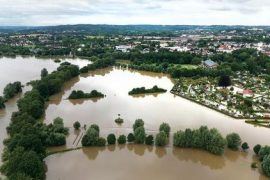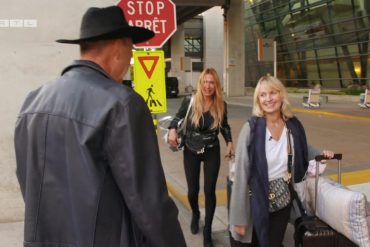Click Noise Memory and Wind Machine Station: An interactive, high-brightness world of experience has been created for photo enthusiasts at the newly designed Ernst Letz Museum at Leica Company Headquarters in Wetzlar. Also seen one of the most expensive cameras in the world.
A dark room with a long work table, a red, glowing virtual liquid swirls across multiple displays in a row. The smell of chemicals is missing, but it’s still clear: We’re in a dark room. The process of how a paper print is made from an exposed film in the laboratory can be emulated here, at least virtually.
The paper is first placed on the screen in either portrait or landscape format, and then the choice of how long to expose the negative. With the swipe of a finger, the picture then moves from one immersion bath to another, and after several work steps, a high-contrast black-and-white picture is created. You can save it through an app and finally take a print out of it.
make photography a reality

Lens, aperture, exposure time – anyone who wanted to take good pictures had to be familiar with the technology behind them. Today, most photos are taken in fully automatic mobile phone mode, and many photographers never leave the display. But the enthusiasm for high-gloss photography and professionally designed images is unwavering even in the age of social media.
Wetzlar camera maker Leica wants to remain part of this modern world of images and has therefore completely rebuilt its company Museum, which opened in 2018: From a Gallery to a World of Experience. Photography should be tangible with all the senses, analog and digital should be intertwined. Visitors can deal with photography interactively: with the technology, design and aesthetics behind it, but also with the history.
Click noise memory and wind machine station
Various stations have been built on approximately 600 square meters of exhibition space, elegantly designed in black, white and gold. In addition to the virtual darkroom, the camera is a memory with click noise, visitors can experiment on the wind machine and photograph themselves with their hair flying.
There are also very practical explanations of the basic laws of photography: Where do the lines run? What is the golden ratio? How did the format come to be popular today? Over and over again it’s about optics and perception. A white room with different surfaces and changing lighting should show how different shades of white can appear.
Really Big Leica Show

In addition to the many tech experiments and optical gadgets, visitors should also be prepared for this: the company’s own private museum is of course also a huge Leica show, detailing the company’s history with its ancestors, inventions, and cult models. is presented on. The focus is always on: Leica, the mother of all compact cameras, has been made in central Hesse for over 100 years. One should not expect to find products from other manufacturers here.
A particularly rare exhibit will be on display at the museum until the end of the year: one of the most expensive cameras in the world. It is one of the first compact cameras of the so-called 0 series. It comes from a private collection. It is said to have been photographed by Leica designer Oskar Barnack himself in the 1920s. According to the company, only about a dozen cameras of the 0 series are left. Most recently, a copy was auctioned off in 2018 for a record amount of 2.4 million euros.
Leica Gallery
The first Leica gallery was opened in Wetzlar in 1976. There are now 26 galleries around the world showcasing photo series by internationally renowned photographers. Even in the future, Wetzlar will have classic high-gloss exhibitions on one floor. Magnum photographer Steve McCurry’s exhibition is still running until October 10.
more info end
Bernhard Kehrer with his agency Studio KLV has already designed several interactive museums and exhibitions, for example for the Brothers Grimm Cultural Center in Hanau. For him, the symbiosis of technology and photography in this project was particularly exciting. “The technology is there, but it vanishes again,” Kehrer explains. “Therefore visitors are presented not only with great technology, but are invited to rediscover the world in a playful way.”
Offer to make mobile phone photo too

Leica art director Karin Rehn-Kaufmann is convinced that the company headquarters in Wetzlar is a good location for the museum and will attract an international specialist audience as well as people from the region: “The museum is not aimed solely at Leica freaks who Want to see technology in the smallest detail, but also young people who can try things for themselves with their cell phones.” There will also be proposals for children and school classes in the future. “We are currently in the process of creating a concept and establishing contacts.”
more info end

Web guru. Amateur thinker. Unapologetic problem solver. Zombie expert. Hipster-friendly travel geek. Social mediaholic.





